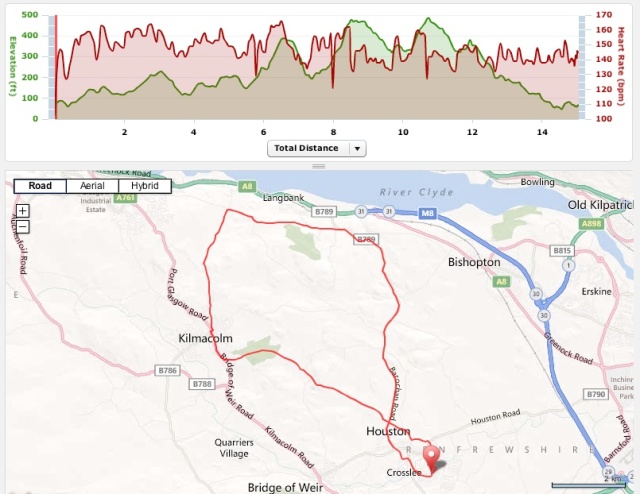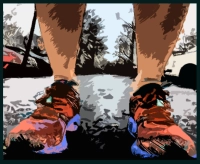RUNNING UP HILLS
There’s a lot to be said about running up hills.The main thing is that it beings a third dimension to your training: elevation. There’s something very satisfying about cresting a hill and looking back on what you just did. Many people shy away from hills, thinking they;re so much hard work. But, it’s not that much more work. that is, if you can train your body to do it on technique instead of muscle. 🙂
And if you train on hills, your body will get used to running them. Then when the ultimate hilly event comes around, the hills should be easy for you. Fingers crossed. 🙂
When you run on flat, the two parts of your body (upper and lower) tend to work as hard as each other, 50/50. But when you run uphills, you need to change this proportion so that your legs aren’t overworking. Your upper body needs to work a little harder on the hills. So, instead of being 50/50, it’s more like 60/40 or 70/30. It’s not just a matter of increasing your upper body effort, its also a case of reducing your lower body effort.
The best way to reduce your lower body effort is to relax everything from the waist down as much as possible. Relaxing your legs shortens your stride length, which shifts you into a lower gear. Isn’t that what you do in your car when you go up a hill? So downshift and use your gears!
I like running hills, especially with my good friend Julie Ann (here’s an example of on of our long hilly runs – or see the map below – 15 miles, 2:30 – great run, great fun, great chat!).
Julie Ann said that people would come out to hers to run with her and hate the hills, but (call me crazy) I enjoy them. Any thoughts of pacing or speed go out of the window and instead we chat and negotiate the hills without much thought (and quite a few swear words usually from me!!)
Using your upper body to power up the hill
Since you’re not using your legs as much, you’ll have to shift your energy to your upper body. Swinging your legs and leaning are the ticket. Uphill arm swing should be forward, (not to the rear, as in flat running). Here’s how to use your upper body to help power you up the hill:
- Keep your hands close to your body, and
- Swing in an upwards motion,
- Starting from the hips and bringing them up to your face.
- Pretend you’re trying to punch yourself in the chin.
- An upward swing will give your body the upward momentum it needs to get up that hill.
Lean into the hill
The other important aspect of running uphill is leaning forward into the hill. Here’s what happens.
- When running on a level surface, you’re tilting at an angle towards the ground.
- As the hill comes up in front of you, you may feel thrown back upright by the hill,
- Which causes you to step up the hill in front of your body.
- This will overwork your hamstrings and lower legs, because you are reaching up the hill with your next step.
- To counteract this tendency, stay forward and keep your lean working for you.
- So that your feet land underneath your centre line and not in front of it.
Things to remember on uphills:
- Shorten your stride.
- Lean forwards.
- Swing your arms up to your face.
- Relax your legs.
- Keep your heels down.
Relaxing your legs will reduce your perceived exertion level and leave you with a sense that running uphill is not much more difficult than running on a level surface.
Running up steep hills:
Lorn’s Lateral Striding
If you like to run hills, you’ll eventually find where you come upon a major hill that seems like a ‘walker’. The reason steep hills are so tiring is that keeping your heels down is hard. You are forced up on your toes to prevent your Achilles tendons from being overstretched. Then your calves get tired from doing all the work of keeping you on your toes, so you stop and walk.
In training for the Highland Fling on the West Highland Way in the last few months, I’ve definitely come across a few of these! And whilst on an Ultramarathon it is good to walk at some points, especially when you are running 26 plus miles.
But there is a way around feeling the need to walk up hills. Go up them sideways! Not sideways as in a sideways shuffle or crab walk / run, but:
- Turn your hips to one side and run up the hill with your lower body turned to the side.
- Your feet will be at about a 45 degree angle to the direction you are running in.
- They’ll be doing a little crossover step, but your heels will be down.
- Meaning that your Achilles will not be overstretched and your calves won’t be over worked.
- As you run up a hill, run with your body at 45 degrees to the hill for about 6-8 strides, then alternate it to the other side.
- This allows one set of lateral muscles to work whilst the other rests, then they switch over.
The beauty of this technique is that it engages your lateral muscles instead of the ones you’ve been using to run forwards for how many miles. I can see this really being of benefit in the marathons and ultramarathons I run and train for.
So the next time you’re running up a steep hill, try running using a Lateral Stride instead of a normal one and see how it helps. 🙂



I prefer hills, I ran a marathon on a flat course and it near killed me… Same muscles for 26.2 miles… Put me on a course with hills, I find it is easier…
cheers
I like hills too. 🙂 Nice and challenging – maybe not conducive of getting a PB for a distance, but more interesting x
Hey Lorn….how about this for a great hilly run http://www.thepurbeckmarathon.co.uk
I’m part of the team putting that one together. It’s going to be amazing and we can CERTAINLY promise some hills
Rosex
Oooh Rose…it looks good…. but (unfortunately??) we’re booked to go be in Lake Garda in Italy on the 16th of September…. so wouldn’t be able to make it. 😛 x x Your link didn’t work, but if anyone else is interested in the Purbeck Marathon, go here: http://www.purbeckmarathon.co.uk/register-now/ 🙂
I don’t do as much hill training as I would like, mainly cos there are very few hills near where I live.
I did a half marathon a few weeks ago which is described as the 13 hills in 13 miles half… Wow was it tough!!!
Pingback: How to run and enjoy it! | Lorn Pearson Trains…